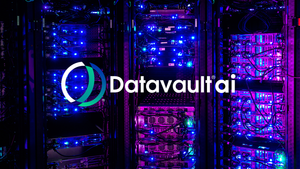
The relentless expansion of 5G networks and advanced connectivity is not merely an upgrade; it's a foundational shift, laying the groundwork for a future brimming with unprecedented technological capabilities. Offering speeds up to 100 times faster than 4G and ultra-low latency, this new era of connectivity is rapidly moving from theoretical promise to tangible reality, reshaping industries and daily life. Its immediate implications are profound, promising to unlock the full potential of emerging technologies that were once confined to science fiction.
This technological leap is pivotal for the widespread adoption and efficacy of a multitude of innovations, from supporting millions of interconnected Internet of Things (IoT) devices to enabling the precision required for remote surgeries with haptic feedback, and ensuring real-time communication critical for the safe operation of autonomous vehicles. The global economy stands at the precipice of a transformation driven by this pervasive, high-speed, and low-latency network.
The Dawn of Hyper-Connectivity: What Happened and Why It Matters
The "event" at hand is the ongoing, accelerating global deployment and integration of 5G networks and advanced connectivity solutions. This isn't a single, isolated incident but a continuous rollout that has gained significant momentum in recent years. Telecommunication giants and technology innovators worldwide have been heavily investing in the infrastructure required to support this next-generation network, including new cell towers, fiber optic backbones, and advanced antenna technologies. The timeline has seen major cities and increasingly rural areas gain access, with a continuous push towards ubiquitous coverage.
This matters immensely because 5G is more than just faster internet for smartphones; it's the nervous system for the digital age. Its ultra-low latency (as low as 1 millisecond) and massive device connectivity (as low as 1 millisecond) and massive device connectivity (up to 1 million devices per square kilometer) are critical enablers for technologies demanding instantaneous response and immense data handling. For example, in healthcare, 5G facilitates remote surgeries, allowing specialists to operate on patients thousands of miles away with robotic precision and real-time haptic feedback. In transportation, it ensures autonomous vehicles can communicate with each other and infrastructure in milliseconds, preventing accidents and optimizing traffic flow. The sheer volume of data generated by billions of IoT sensors, from smart cities to industrial complexes, can now be processed and acted upon in real-time, driving efficiency and entirely new applications.
A Market Transformed: Winners, Losers, and Shifting Valuations
The advent of 5G and advanced connectivity is creating a seismic shift in market dynamics, with significant opportunities for growth and potential pitfalls for those unable to adapt. The global 5G technology market, valued at approximately $156.8 billion in 2024, is projected to surge to an astonishing $1,584.2 billion by 2035, indicating a compound annual growth rate (CAGR) of about 23.4%. This massive growth trajectory underscores the profound economic impact, with projections suggesting 5G could generate $13.2 trillion globally and create over 22 million jobs by 2035.
Potential Winning Companies: Companies at the forefront of 5G infrastructure and technology are poised for substantial gains. Semiconductor companies are critical, providing the essential chips for 5G devices and networks. Key players include Qualcomm (QCOM, NASDAQ), a leader in 5G chips for smartphones, IoT, and automotive; Broadcom (AVGO, NASDAQ), powering 5G networks with its microchips; Intel (INTC, NASDAQ); AMD (AMD, NASDAQ); NVIDIA (NVDA, NASDAQ); and Micron (MU, NASDAQ). Mobile tech equipment and infrastructure providers are also central to the rollout. Ericsson (ERIC, NASDAQ) and Nokia (NOK, NYSE) are instrumental in global 5G deployments, while Huawei maintains a strong presence in Asia and parts of Europe. Other significant contributors include Samsung, CommScope (COMM, NASDAQ) for network infrastructure, Keysight Technologies (KEYS, NYSE), and Viavi Solutions Inc. (VIAV, NASDAQ). Telecommunication operators are heavily investing in network deployment and service offerings, with AT&T (T, NYSE), Verizon (VZ, NYSE), T-Mobile (TMUS, NASDAQ), and Comcast (CMCSA, NASDAQ) being major players in the U.S., alongside international counterparts like Deutsche Telekom. Finally, real estate asset holders that own and operate wireless infrastructure, such as American Tower Corp (AMT, NYSE) and Crown Castle Inc. (CCI, NYSE), benefit from the surging demand for cell towers and data centers.
Potential Losing Companies: While direct "losers" are harder to pinpoint, companies and industries that fail to adapt to the 5G paradigm face significant challenges. Businesses heavily reliant on older, slower network infrastructures risk obsolescence as 3G networks are decommissioned, necessitating costly upgrades for IoT devices and systems. Industries slow to adopt 5G-enabled digital transformation may find themselves ceding market share to more agile competitors. Furthermore, the expanded attack surface created by massive 5G connectivity demands robust cybersecurity. Companies that do not prioritize and standardize security protocols across their 5G deployments could face severe vulnerabilities, data breaches, and reputational damage.
Broader Implications: Reshaping Industries and Society
The ripple effects of 5G and advanced connectivity extend far beyond mere speed improvements, fundamentally reshaping industries and impacting societal structures. This technology is the cornerstone of Industry 4.0, enabling hyper-connected smart factories with unprecedented levels of automation, real-time operational control, predictive maintenance, and the creation of digital twins. This will lead to enhanced efficiency, reduced downtime, and safer working environments.
In healthcare, beyond remote surgeries, 5G will revolutionize telehealth with high-definition video consultations, real-time diagnostic imaging, continuous patient monitoring via wearables, and efficient transmission of massive medical datasets. This promises to expand access to quality care, particularly in underserved regions. Transportation and logistics will be transformed by smart transportation systems, optimized traffic management, reduced congestion, and highly efficient logistics through real-time data exchange between vehicles and infrastructure. Autonomous trucks and connected convoys will not only enhance safety but also significantly reduce fuel consumption and increase delivery efficiency.
Retail will see enhanced customer experiences through immersive technologies like augmented reality (AR) mirrors and virtual reality (VR) shopping, improved in-store operations with real-time inventory management, and a blurring of the lines between online and physical shopping. Energy and utilities will benefit from more responsive smart grids, real-time monitoring of energy consumption, smart transformers, and early detection of issues, leading to less waste and increased efficiency. Furthermore, 5G is the backbone for smart cities, enabling intelligent traffic management, enhanced public safety, improved environmental monitoring, and sustainable urban development. This widespread integration of advanced connectivity also creates entirely new revenue opportunities and business models, from instant cloud access and high-quality cloud gaming to immersive AR/VR experiences, while simultaneously creating new job opportunities and enhancing existing roles across various sectors.
What Comes Next: Navigating the Future of Connectivity
As 5G networks continue their global rollout, the immediate future will see a focus on densification and optimization, expanding coverage to more remote areas and enhancing performance in urban centers. Short-term possibilities include a rapid acceleration in the adoption of consumer-facing 5G applications, such as enhanced mobile broadband and cloud gaming, alongside initial deployments of enterprise-level solutions in manufacturing and logistics. Long-term, we can anticipate a seamless integration of 5G into critical infrastructure, powering fully autonomous systems and deeply embedded IoT ecosystems.
Strategic pivots will be required across industries. Businesses must invest in 5G-compatible hardware and software, re-evaluate their operational workflows to leverage real-time data, and prioritize robust cybersecurity measures. Market opportunities will emerge for innovators developing new applications and services that specifically capitalize on 5G's unique capabilities, such as edge computing solutions and advanced AI-driven analytics. Challenges will include managing the immense data generated, ensuring interoperability between diverse devices and platforms, and addressing ongoing security concerns. Potential scenarios range from a rapid, transformative evolution of industries to a more gradual, sector-specific adoption, depending on regulatory frameworks, investment levels, and technological breakthroughs.
Conclusion: The Enduring Impact of a Connected World
The expansion of 5G and advanced connectivity represents a pivotal moment in technological history, marking a shift towards an era of unprecedented digital integration and innovation. The key takeaway is that this is not merely an incremental improvement but a fundamental enabling technology that underpins the next wave of digital transformation. Its ultra-fast speeds, ultra-low latency, and massive connectivity capabilities are unlocking the full potential of IoT, remote operations, and autonomous systems, fundamentally reshaping how industries operate and how societies function.
Moving forward, the market will continue to be driven by significant investments in infrastructure, semiconductor technology, and the development of 5G-enabled applications. Investors should closely watch the performance of key players in the semiconductor, telecommunications, and network infrastructure sectors, as well as companies that are successfully integrating 5G into their core business models to drive innovation and efficiency. The lasting impact of advanced connectivity will be a more interconnected, intelligent, and efficient world, but one that also demands constant vigilance regarding cybersecurity and ethical considerations. The coming months will be crucial in observing how industries adapt, new applications emerge, and the regulatory landscape evolves to support this transformative technology.





